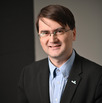Shipbuilding: coping with sanctions
Dependence of Russian shipbuilding on imported components and equipment is different in various segments. The most dependent are the fishing and research segments, the least – cargo ships of mixed sea/river class. There are problems with engines, diesel generators and special equipment.
RF Government has been conducting consistent work on phasing out imports in shipbuilding throughout the recent years by setting local content requirements and offering state support measures. Nevertheless, reliance on imports is still high in some segments for some items. While naval construction is almost free of such a dependence, the segment of fishing ships construction features high level of it so far.
In mid-March 2022, Aleksey Rakhmanov, General Director of United Shipbuilding Corporation, said: “There are no global changes for naval shipbuilders. We have a lot of work under state defence order which has been and still our priority. Dependence on foreign supplies is almost zero here.”
As for the segment of civil shipbuilding, the situation is not that simple. Nikolay Shablikov, BoD Chairman at Nordic Engineering, who used to hold an ad hoc position in the Ministry of Industry and Trade, told IAA PortNews that the most dependent on imported components are research vessels in the part of specialized scientific equipment and fishing vessels. The least dependent are cargo ships of mixed sea/river class of large RST27, RST27M and RSD29 series. There are problems with engines, diesel generators and special equipment.
“The most dependent on imported components are research vessels in the part of specialized scientific equipment and fishing vessels”
One of the highest levels of local content is that of nuclear-powered icebreakers. According to Vyacheslav Ruksha, Deputy General Director of Rosatom, local content of LK-60 icebreakers is as high as 92% in financial terms.
Low dependence level is in the segment of electric vessels for transportation of passengers along rivers and canals. As Denis Tkachyov, Executive Director of Emperium, designer and manufacturer of electric vessels for passenger transportation in Moscow and other cities, told IAA PortNews, local content of such vessels is up to 80%. Among the crucial components of foreign origin he named energy storage cells manufactured in China. “Cells of domestic origin are far from being perfect in terms of size and characteristics. However, it can be solved with proper will and efforts,” explained Denis Tkachyov.
He also believes that imported engines and propulsion units can also be replaced. “The characteristics will be different but not crucially. Anyway, construction can be continued with domestic components,” said the expert.
A different picture is in the segment of fishing vessels, where local content is makes about 30%. The problem is that construction of fishing ships is based mainly on Norwegian designs which imply foreign equipment. Besides, Russia has no sufficient competence in production of sophisticated fishing equipment, winches, etc.
In this situation, Russia’s largest shipbuilder, USC, could play an integrating role. According to Aleksey Rakhmanov, design bureaus of the corporation are currently developing projects taking into account the capabilities of domestic machine-building companies supplying engines, anchorage and docking equipment, steering equipment, etc. Underway is establishment of in-house competence centers and development of domestic suppliers lists. Makers List of USC numbers over a hundred of Russian companies. USC encourages companies to open research and development centers for creation of domestic alternatives to foreign equipment.
“Our engineers and partners have everything needed to raise import substitution in civil shipbuilding to a new level,” said Aleksey Rakhmanov.
It should be noted that the key obstacle to development of components and equipment production is the absence of large orders or stable demand. Domestic m alone is not sufficient, it is too narrow. USC earlier suggested creation of so called ‘national champions’ in machine building able to enter the foreign markets as well.
“Those champions should take into account the global competition, enter new markets, show ambitions which were well known in 40s, 50s, 60s, and give the industry a new look,” comments Aleksey Rakhmanov.
With its divisions, USC could also act as an integrator of certain types of components and equipment produced in Russia. For example, USC-Dvizheniye could be an integrator for production of propulsion units.
Anyway, there are foreign suppliers from neutral and friendly countries, such as China, Turkey, etc.
More industry-related content is available on our social media pages: YouTube, Telegram, Twitter, Yandex Zen







